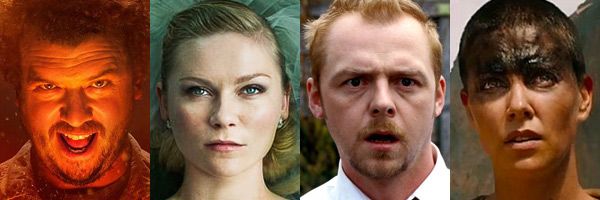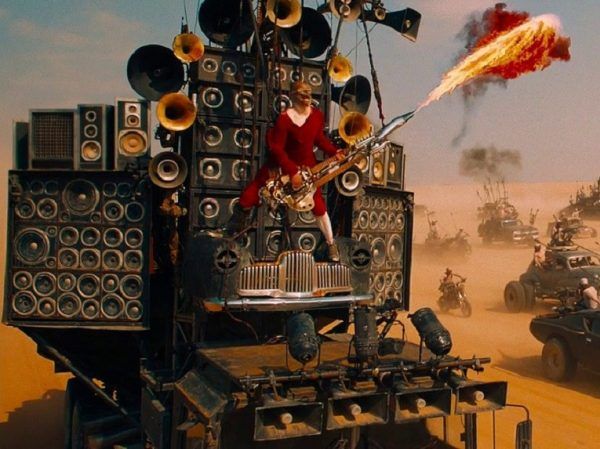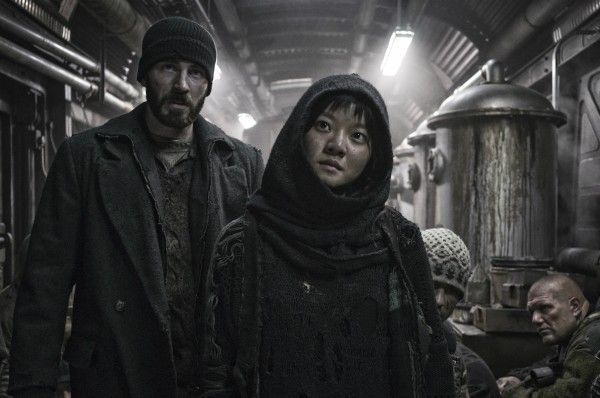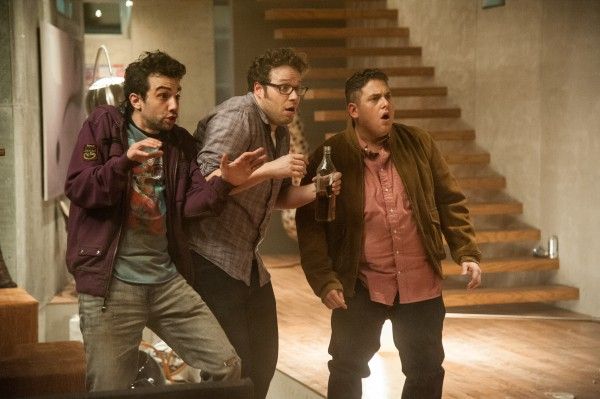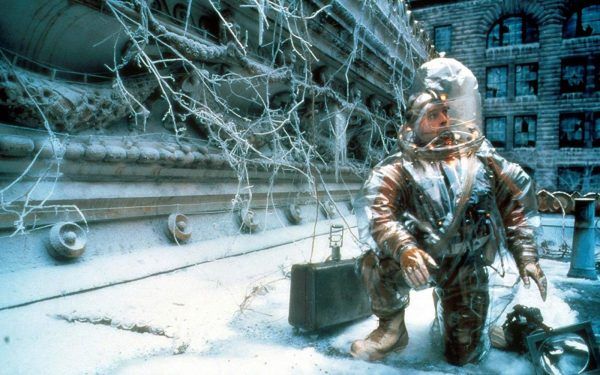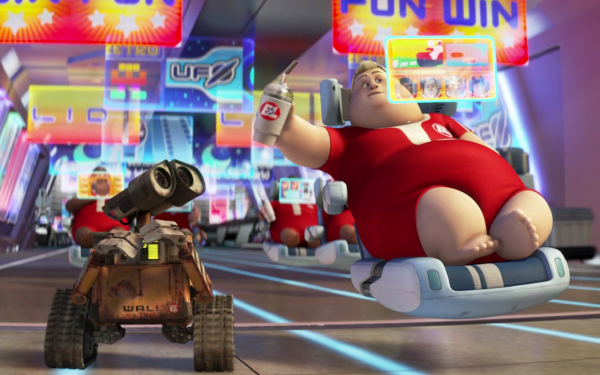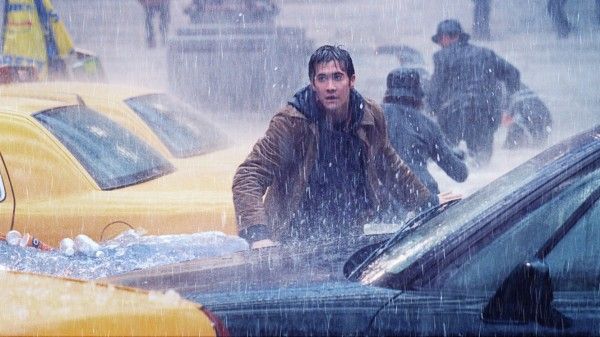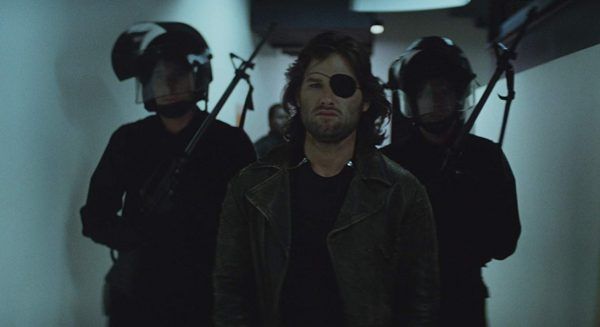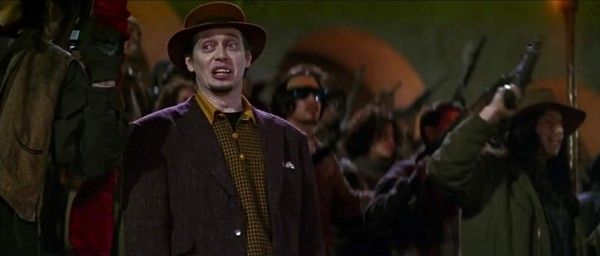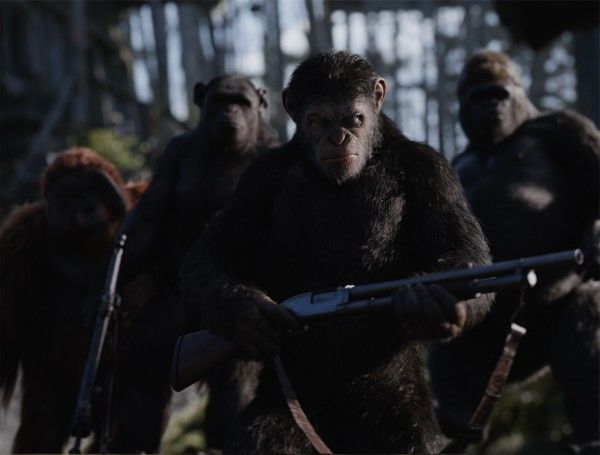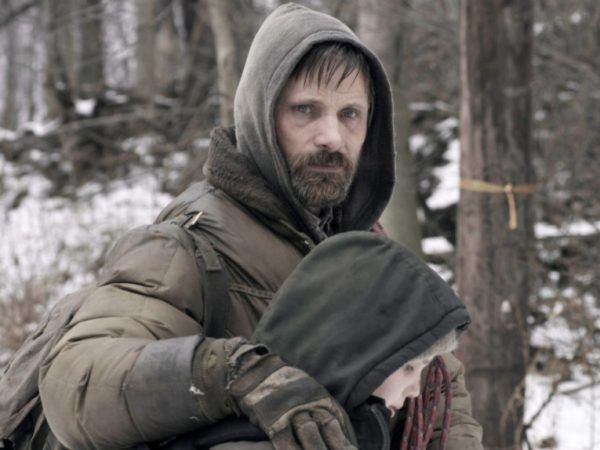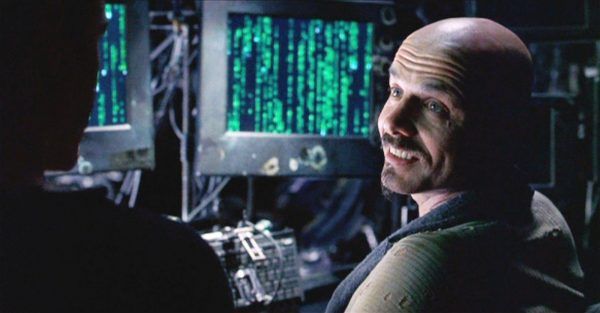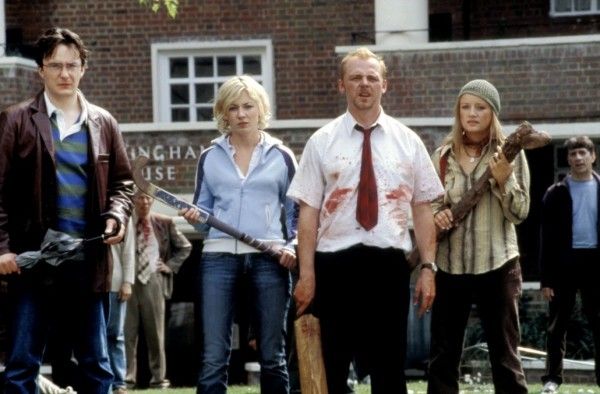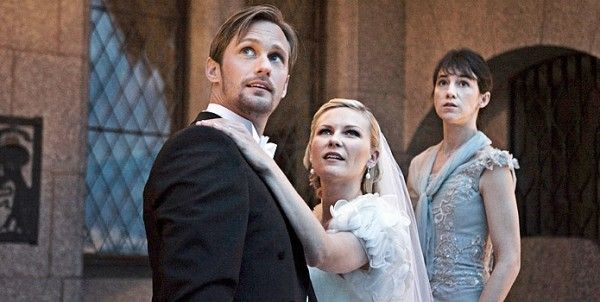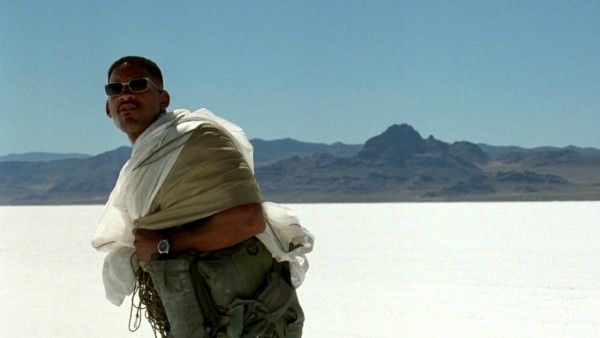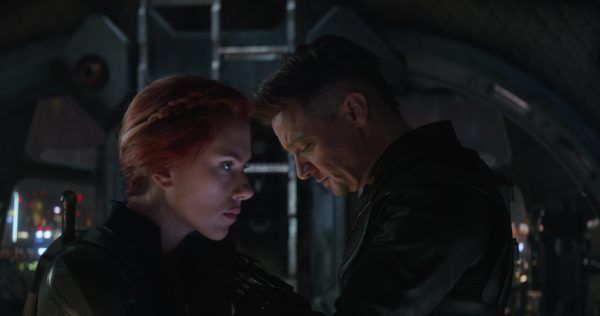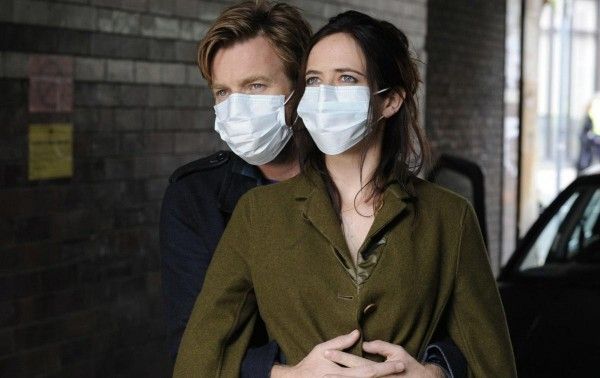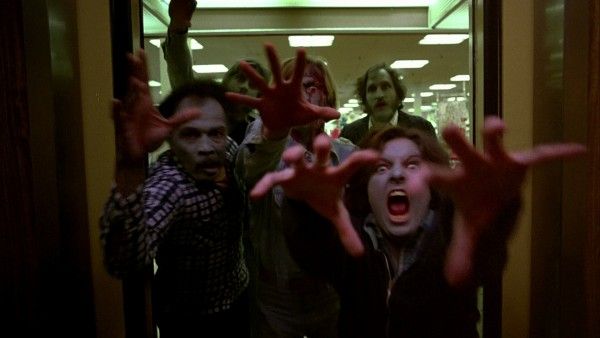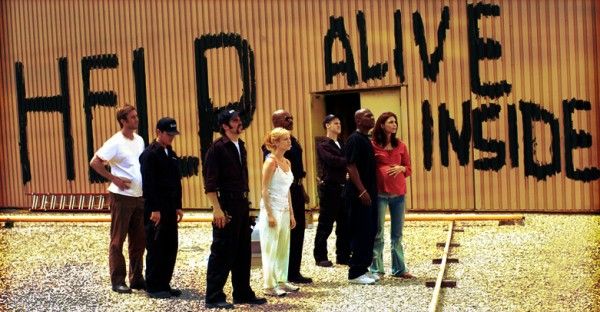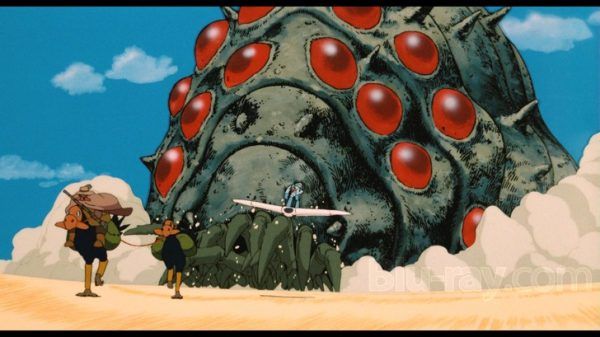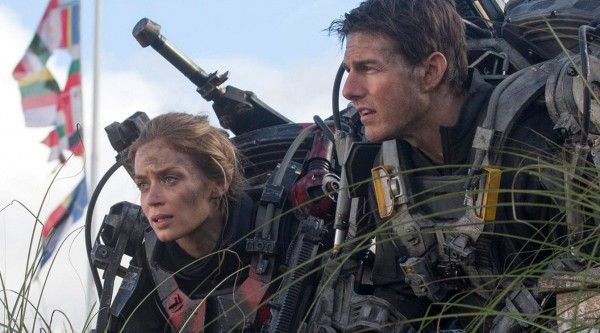In these uncertain times, you may find yourself thinking about the apocalypse more often than usual. That’s not to say the world is ending, but a global pandemic will, uh, change how you think about things pretty quickly. And while some may find that the kinds of movies they want to watch right now are comfort films or adventure movies—something to take their mind off the day-to-day—some may want to go the opposite direction. Just immerse themselves in cinema that reflects the world we’re living in right now, or one we’re heading towards.
To that end, we here at Collider put our heads together to come up with the definitive list of the best apocalypse movies ever made. These films may offer a glimpse at what’s ahead, they may be full of pointers for how to navigate society after a global catastrophe, and more often than not they’re an exaggerated look at what would happen if the world just went to hell. But we can guarantee one thing: they’re all worth watching.
Our criteria for selecting “apocalypse” movies were films in which the world has gone through some sort of catastrophic event. So this ranges from the extreme of Mad Max: Fury Road to a more subtly changed world (if we could’ve put The Leftovers on here, we would have).
But all of these films have something to say not just about the world we could be living in, but the one we’re living in now—pandemic or no. So peruse our list of the best apocalypse movies below, and get to preppin’.
Mad Max: Fury Road
Director: George Miller
Writers: George Miller, Brendan McCarthy, Nico Lathouris
Cast: Tom Hardy, Charlize Theron, Nicholas Hoult, Hugh Keays-Whiteley
You might think it’s crazier than a chromed-out War Boy to call Mad Max: Fury Road—set in a future where the human race nuked itself to shit and the world is controlled by a brutal overlord—a “comfort watch” in these trying times. But man, Fury Road is pure high-octane cathartic release. George Miller, possibly insane director of the first three Mad Max films and also Happy Feet, just took a bunch of 18-wheelers and rally cars out into the desert and blew them up for real. Charlize Theron plays a one-armed warrior woman who batters a despot’s regime to pieces. Tom Hardy gets straight-up thrown around for the entire ride. Watching Mad Max: Fury Road one time is the equivalent, heart rate-wise, of jumping a go-kart over a gorge, which is helpful when you can’t actually go outside. A perfect film. Watch it immediately. Have a lovely day. --Vinnie Mancuso
Snowpiercer
Director: Bong Joon Ho
Writer: Bong Joon Ho, Kelly Masterson
Cast: Chris Evans, Song Kang Ho, Ed Harris, John Hurt, Tilda Swinton, Jamie Bell, Octavia Spencer
At this point I should only have to tell you that Bong Joon Ho directed Snowpiercer and that should immediately bump it up to the top of your must-watch list. Just like Parasite was a favorite film of 2019, Snowpiercer snagged a spot on my personal top ten list back in 2014. The movie is an adaptation of the French graphic novel Le Transperceneige and takes place in 2031 aboard a train with no final destination. It just circles the globe, shielding survivors from the results of a disastrous attempt to stop global warming. Similar to Parasite, Snowpiercer addresses a slew of socioeconomic concerns through a taut thriller that successfully juggles a variety of tones and genres. While the wealthy are living in luxurious, vibrant cars at the front of the train, Curtis (Chris Evans) and the others confined to the tail end are forced to make due with dreary accommodations and a questionable food source while living in constant fear of being targeted by violent train staffers. But now, enough is enough. Curtis decides it’s time to lead a revolution and make his way to the front of the train, taking the viewer from the dreariness and horrors of the back, to an all-out brawl, to a serene greenhouse, to a disturbingly cheery classroom and beyond, all while balancing a mix of sheer terror and satire, challenging you to think twice about familiar social constructs and exactly what it means to be a leader. - Perri Nemiroff
This Is the End
Writer/Directors: Seth Rogen, Evan Goldberg
Cast: Seth Rogen, Jay Baruchel, Jonah Hill, James Franco, Danny McBride, and Craig Robinson
Are you still just like, really, really annoyed by the idea of celebrities “helping” during a pandemic by singing John Lennon’s “Imagine” from the comfort of their mega-homes? Then the balm you need is This Is the End, the pitch-perfect horror-comedy directed by Seth Rogen and Evan Goldberg that satirizes how Hollywood’s biggest names would react to the literal apocalypse. The answer, as in real life, is: “Very Poorly”. Playing themselves, Rogen, Jay Baruchel, Jonah Hill, James Franco, Danny McBride, and Craig Robinson find themselves holed up in Franco’s L.A. mansion as demons rise from the Earth and the end of days arrives. If it’s one thing we’ve for sure learned during this pandemic it’s that celebrities are not “just like us”, but at least This Is the End is pretty dang funny about the whole thing. -- Vinnie Mancuso
12 Monkeys
Director: Terry Gilliam
Writers: David Peoples and Janet Peoples
Cast: Bruce Willis Madeline Stowe, Brad Pitt, and Christopher Plummer
To say Terry Gilliam’s vision of the future in 12 Monkeys is bleak is to say the sky is blue. And it’s the thematic bleakness that really comes through. The future part of the story is set in 2035, where a prisoner living in an underground compound (Bruce Willis) is selected to be trained to go back in time and stop a deadly virus from wiping out almost all of humanity in 1996. Why are prisoners used? Because time travel is dangerous, of course, and they’re expendable. Willis’ character goes on a pretty gonzo trip once in 1996, and past, present and future begin to blend together as we barrel towards a humdinger of an ending. Along the way, he crosses paths with a mental patient and radical environmentalist played by Brad Pitt, in a role that would earn Pitt his first-ever Oscar nomination. This movie is nuts, and kind of a "worst case scenario" for a viral pandemic. – Adam Chitwood
WALL-E
Director: Andrew Stanton
Writers: Andrew Stanton and Jim Reardon
Cast: Ben Burtt, Elissa Knight, Jeff Garlin, Fred Willard, John Ratzenberger, Kathy Najimy, and Sigourney Weaver
If you’re in the mood for an apocalypse movie that has an optimistic bent, WALL-E is your best bet. Pixar’s 2008 masterpiece envisions a future in which humans have entirely left planet Earth behind on account of the buildup of garbage, trash, and waste everywhere. Humans now live on a giant cruise ship out in space, but have forgotten their roots—the only lives they remember are the ones they lead now, in which computers program their every moment and their muscles have atrophied from lack of use. WALL-E is actually probably more accurate than we care to admit, but the charm of the film is that at its root it’s a love story between two robots, who eventually work together to remind humans where they came from. Even when things look darkest, there's still hope. Assuming you've got some kind robots to help nudge you in the right direction. – Adam Chitwood
The Day After Tomorrow
Director: Roland Emmerich
Writers: Roland Emmerich and Jeffrey Nachmanoff
Cast: Jake Gyllenhaal, Dennis Quaid, Ian Holm, Emmy Rossum, and Sela Ward
If you like your apocalypse movies with a hefty dose of bombast, Roland Emmerich’s The Day After Tomorrow ain’t bad. Notably we’re not putting Emmerich’s 2012 on this list—that movie is bad bad. But while The Day After Tomorrow is a little cheesy and inelegant at times, it ultimately works. The film is a $125 million warning sign about the effects of climate change. Tt follows an American paleoclimatologist (Dennis Quaid) and his colleagues and son as they attempt to warn government officials of an impending disruption to the North Atlantic Ocean circulation. The government officials don’t listen, what the scientists said would happen happens, and the world welcomes a new Ice Age. The visual effects here are pretty stunning, and Emmerich does a swell job of holding tension while showing what a catastrophic weather event would do to New York City. You know, in case you needed a reminder of another major world-changing event destined to happen in addition to this whole pandemic thing. – Adam Chitwood
Escape from New York
Director: John Carpenter
Writers: John Carpenter, Nick Castle
Cast: Kurt Russell, Harry Dean Stanton, Donald Pleasance, Adrienne Barbeau, Ernest Borgnine
This might seem...a little on the nose right now. But John Carpenter’s dark sci-fi classic Escape from New York is a warning sign and a reminder that things could always be worse. Kurt Russell playing a jacked renegade with an eye-patch named Snake Plissken gives this movie a fun edge—and it is fun, and somehow even weirder than anyone ever remembers—but it’s also super bleak, with a screenplay Carpenter wrote pissed-off as hell in the wake of the Watergate scandal. It’s about governments that fail their people, and what happens to a lower class after they’re completely forgotten. In this case, that just happens to lead to a city-wide prison-state that holds deadly wrestling matches presided over by a blinged-out overlord named The Duke (Isaac Hayes). Let’s, uh, hope we never reach that point. --Vinnie Mancuso
Escape from L.A.
Director: John Carpenter
Writers: John Carpenter, Debra Hill, Kurt Russell
Cast: Kurt Russell, Steve Buscemi, Stacey Keach, Peter Fonda, Pam Grier, Bruce Campbell
1981’s Escape from New York is a classic pulp action thriller. The 1996 sequel Escape from L.A. is exactly none of those things. However, it is still absolutely worth watching, both as a fascinating artifact of mid-90’s cinema and as an artifact of the mid-90’s hubris surrounding the power of digital effects. I want the scene in which Snake Plissken (Kurt Russell) surfs on an apocalyptic wave holographically projected on my tombstone for all eternity, alternated on weekends and holidays with the scene in which Snake shoots hoops for his freedom. There are no digital effects in that sequence, but it is no less important to me. John Carpenter’s joy for filmmaking can still be felt in this subpar follow-up about the future island of Los Angeles being converted into a prison camp for moral degenerates by a theocratic president, and it remains just as chaotically libertarian as the original. (Snake once again is barely a hero and essentially dooms humanity because the person giving him orders is an asshole.) It’s endlessly cheesy, but it’s impossible not to enjoy yourself anytime Russell and Carpenter make a movie. - Tom Reimann
War for the Planet of the Apes
Director: Matt Reeves
Writers: Mark Bomback, Matt Reeves
Cast: Andy Serkis, Woody Harrelson, Steve Zahn
When my girlfriend and I left the cinema after seeing War for the Planet of the Apes, tears streaming down our cheeks, we looked at each other. Assessed each other’s emotional states of being. And then my girlfriend said something that will forever be lodged in my cinematic appreciation brain: “They’re monkeys!” In a very silly voice, she analyzed exactly why we were so gobsmacked by this epic motion picture, the conclusion to the Planet of the Apes reboot trilogy and perfect extension of Matt Reeves’ previous perfect, darker-than-dark middle chapter Dawn of the Planet of the Apes. Somehow, these filmmakers turned a potentially silly premise, which we’ve seen played for camp many times on the screen, into an exacting, comprehensive, emotionally complicated, and ultimately hopeful screed on the need for empathy to triumph over power for humanity to succeed. And… they’re monkeys! Andy Serkis plays the lead monkey, Caesar, in another of his absolutely perfect motion capture roles. His fellow apes and he seem to have established dominance, or at least a queasy co-leadership of “the Earth” with humans. Until Woody Harrelson’s Colonel, a cruel and bigoted leader of a human anti-ape militia, decides it’s time for humans to take theirs back. Thus the war is on, a taxing, heart wrenching, all-encompassing war that brings every character to the brink (especially Steve Zahn’s perfect performance as the sweetest ape you’ll ever see). And on the other side of this brink? Hope. The promise of light after the darkest moments. The knowledge that love defeats hate. And, again, I cannot stress this enough: They’re monkeys! - Greg Smith
The Road
Director: John Hillcoat
Writer: Joe Penhall
Cast: Viggo Mortensen, Kodi Smit-McPhee, Robert Duvall, Charlize Theron, and Guy Pearce
Be forewarned: The Road is one of the bleakest movies on this least, and indeed one of the bleakest films ever made. Based on the Cormac McCarthy novel of the same name, the film takes place in a world that has been ravaged by a global cataclysm that caused an extinction event. A father (Viggo Mortensen) and son (Kodi Smit-McPhee) try to navigate their way through this true wasteland, fighting off cannibals, thieves, and their own psyches. Indeed, The Road is a film about the devolution of humanity in the wake of such a catastrophic event. Who are the “good guys” and who are the “bad guys?” In a world where food and shelter are scarce, does it behoove anyone to be kind? And what are the ramifications of violence? The Road offers absolutely no easy answers and is definitely not a feel-good movie. But if you’re down to, like, just really wallow in a worst-case scenario for humanity, I suppose The Road is worth giving a whirl. – Adam Chitwood
The Matrix
Directors/Writers: Lana Wachowski, Lilly Wachowski
Cast: Keanu Reeves, Laurence Fishburne, Carrie-Anne Moss, Hugo Weaving, Joe Pantoliano
Red pills, dodging bullets, wire-fu, the mystique of Keanu. There is perhaps no modern science-fiction, action, or cyberpunk film that has had more of an influence on modern pop culture than The Wachowskis’ The Matrix. Released in the unbelievable cinematic year of 1999, The Matrix is a rollicking success to this day, a film that manages to blend up a bajillion sources of philosophy, Eastern thinkers, Western muckrakers, and pop culture, and serve up a wholly accessible, entertaining, and smart blockbuster. Keanu Reeves plays a computer hacker Neo who knows there’s more to life than meets the eye -- and he’s looking for Morpheus (Laurence Fishburne) to lead him further down the rabbit hole. Coincidentally, Morpheus is looking for Neo, too, as he might be “The One” -- a cybernetic Jesus-figure who can free humanity from its vicious, surreptitious rule by technology.
You see, you and I don’t live in “the real world” -- we live in “The Matrix,” a computer simulation designed to placate us while nasty robots harvest our dang bodies for fuel. And as Neo, Morpheus, Trinity (Carrie-Anne Moss, starting the film off with a kick heard ‘round the world), and the rest of the modern-day-H&M-wearing resistance battle with Agents (led by Hugo Weaving) and decode cryptic prophecies and programs, all kinds of boundary-poking theories are explored in the midst of crackerjack action set-pieces.
Since the film’s release, the Wachowskis have come out as trans women, and are now known as Lana and Lily Wachowski. Their film can thus be read as the interior struggle for the truth in their own identities, and the subconscious knowledge that being reborn in who you truly are will always be the answer. Lilly spoke about this rereading of The Matrix in the wake of her coming out: “There’s a critical eye being cast back on Lana and I’s work through the lens of our transness. This is a cool thing because it’s an excellent reminder that art is never static. And while the ideas of identity and transformation are critical components in our work, the bedrock that all ideas rest upon is love.” Don’t let the Internet bozos who’ve coopted its iconography for miserable ends fool you: The Matrix continues to be that rare kind of meal, both rich in nutrients yet as delicious and addictive as candy. - Greg Smith
Shaun of the Dead
Director: Edgar Wright
Writers: Edgar Wright, Simon Pegg
Cast: Simon Pegg, Nick Frost, Bill Nighy, Penelope Wilton, Kate Ashfield, Lucy Davis, Dylan Moran, Rafe Spall, Peter Serafinowicz
As far as apocalypse movies go, Shaun of the Dead is one-of-a-kind. Directed by Edgar Wright and co-written by Wright and the film’s star, Simon Pegg, Shaun of the Dead manages to surprise us at every turn as it makes for a refreshing entry in the crowded zombie sub-category of the horror genre. Pegg plays the titular Shaun, a slacker stuck in a dead-end job, comfortable with the predictable and safe routines of his life. Shaun is quickly forced to become a confident leader — an occasion he more or less rises to —as he tries to lead his friends and parents to safety.
While most zombie movies follow a group of survivors in search of safety, they don’t have the key elements which make Shaun of the Dead a cut above the rest: Wright and Pegg’s script, Pegg’s incredible chemistry with Nick Frost, who plays Shaun’s best friend Ed, and Wright at the helm. Without these essential elements, Shaun of the Dead would be a by-the-numbers zombie apocalypse movie. The rapid-fire, wry, joke-laden dialogue written by Wright and Pegg is so good and continues to reward repeat viewers who catch new jokes every time. This, in combination with some great visual jokes and ongoing bits like Shaun and Ed’s first attempt at killing a zombie or the mirror survivor group led by Shaun’s ex, bring much-needed comic relief to this particular zombie event. With these elements in place, Shaun of the Dead de-escalates the terror associated with an apocalyptic scenario and becomes one of the best horror comedies of the last 20 years. Plus, Shaun of the Dead is responsible for teaching us that, in apocalyptic scenarios, all we need to do go to the Winchester, grab a pint, and just wait for this to all blow over. - Allie Gemmill
Melancholia
If there’s one excellent movie you might not want to watch during the COVID-19 crisis, it’s Lars Von Trier’s Melancholia, a stunning, mesmerizing, and absolute devastating movie about declining mental health, the end of the world, and how easily one can feel like the other. What I’m saying is, it’s depressing as fuck (Von Trier gonna Von Trier) and a bad mood movie that will make you feel worse about human nature during times of crisis. That said, it’s also phenomenal. Kristin Dunst has never been better than she is in the 2011 apocalypse drama, where she stars as a woman stricken by a horrendous depressive episode on the night of her wedding — which also happens to be the night she notices changes in space that will lead to mankind’s doom. Namely, a giant rogue planet is coming crashing towards Earth. Told in multiple parts as Justine’s decline and the world’s end unfold in unison, Melancholia taps in the desperate, ugly, cowardly and unflinching lows of human nature and then just keeps tapping away at them with a devastating story that makes the end of the world feel like home to anyone who’s ever touched the bottom of a black dog spell. — Haleigh Foutch
Independence Day
Director: Roland Emmerich
Writers: Deann Devlin, Roland Emmerich
Cast: Will Smith, Bill Pullman, Jeff Goldblum, Judd Hirsch, Randy Quaid, Margaret Colin, Brent Spiner
As a child of the 90s, Independence Day helped set my personal standards for apocalypse and alien invasion movies. Is there a large, super curious looking cloud in the distance? I immediately assume the ID aliens are about to enter Earth’s atmosphere. Is it the 4th of July? I better do my part and share President Whitmore’s (Bill Pullman) iconic speech at least ten times on social media! This is peak Roland Emmerich right here with a top-notch first act that builds suspense by sounding one alarm after the next, challenging you to answer the question, how might you react if you caught a glimpse of such a threat? Are you fleeing the big city or will you be part of the roof-top welcoming committee? Yes, Independence Day essentially follows the most basic disaster movie blueprint, but it proves the value of such a format. The explosive tension of the first act, the impending doom that takes hold in the second until our unlikely heroes crack the code (or cold?) that gives us just one shot (or just one malfunctioning bomb) to ensure that “we’re going to live on!” Independence Day is the best kind of disaster movie comfort food; a wild ride oozing with nostalgia, exhilarating set pieces and charming heroes that rocks a rousing finish. I’m a firm believer that there is never a bad time to push play on Independence Day. - Perri Nemiroff
Avengers: Endgame
Directors: Joe Russo and Anthony Russo
Writers: Stephen McFeely and Christpher Markus
Cast: Too many to name but like Robert Downey Jr. and all those other people. You know.
Yes, technically Avengers: Endgame is an apocalypse movie! It takes place in the aftermath of half of the world’s population being wiped out by that mean alien dude Thanos, of course. And the first hour of the film really is a grief drama about those who were left behind (for the full story, watch The Leftovers). The film does a pretty swell job of envisioning what the world would look like years after such an event occurs, and digging deep into the trauma of those still standing like Steve (Chris Evans) and Natasha (Scarlett Johansson). But it’s also a pretty optimistic film—at heart it’s about a group of people deciding to persevere for years on end to make the world a better place, and to maybe possibly reverse course. And yeah, they have superpowers and stuff. – Adam Chitwood
Perfect Sense
As a director, David Mackenzie has one of those fascinating careers that swings effortlessly from genre to genre. From the erotic thriller Young Adam to the outstanding Neo-western Hell or High Water, Mackenzie has an understated, enigmatic style that slowly sucks you into his films. Right up there at the top is the too-often-forgotten apocalypse drama Perfect Sense, starring Eva Green and Ewan McGregor as two lost souls who find each other just in time to lose everything. Thanks to Green and McGregor, Perfect Sense is sexy and charismatic, the two falling in love as the world falls apart, but the film also features one of the more fascinating apocalypse yarns in recent memory. In short order, the citizens start to lose their senses one-by-one, each loss preceded by a phenomenal emotional outburst. First it’s a bout of heavy crying followed by the loss of smell, and so on, with each new loss leaving humanity closer to the threat of being senseless flesh blobs. It’s a compelling spin on the pandemic apocalypse that only amplifies the emotions, and Green and McGregor give tender performances throughout, making Perfect Sense an absolutely underrated gem of the genre. — Haleigh Foutch
Dawn of the Dead (1978)
Arguably, no one has ever done as much for apocalypse cinema as George R. Romero, The Godfather of zombies who ushered American audiences toward their obsession with the undead with his groundbreaking Night of the Living Dead. That film is a stunner and a cinematic game-changer in its own right, showcasing the ways humanity can rip itself apart even as monsters knock down our doors, but it was his 1978 followup Dawn of the Dead that really leaned all-in on the apocalyptic fantasy and further nailed down his social commentary. Set in the true beloved church of 20th Century America — the mall — the film finds a group of Philadelphia survivors trying to make it through the apocalypse within the walls of the shopping center. It’s a brilliant construct, after all, who could want for anything within those well-stocked walls of the capitalist dream? But want they do and even in their relative paradise, the world crumbles outside them, and of course, eventually, comes to collect from them all. Boasting revolutionary practical effects by the great Tom Savini, Dawn of the Dead pushed the limits of gore and the artistry of effects makeup and backed up all those big, boisterous moments of bloodshed with a compelling character drama and convincing portrait of the end of the world in America. Oh, and it also gave us what remains the most badass piece of dialogue in any zombie film, bar none: When there is no more room in hell, the dead will walk the Earth. — Haleigh Foutch
Dawn of the Dead (2004)
Director: Zack Snyder
Writer: James Gunn
Cast: Sarah Polley, Ving Rhames, Jake Weber, Mekhi Phifer
This film has a lot stacked against it. It has fast zombies. It’s directed by Zack “I’m Grim And Hate Fun” Snyder. It’s an attempt to remake a certified zombie classic from the certified zombie maestro, George Romero. And yet, despite all odds, it works. It manages to have both a sense of humor and a sense of genuine emotional stakes -- Ty Burrell offering one of my favorite “sarcastic comic relief” performances in recent memory, and Mekhi Phifer and Inna Korobkina providing a genuinely invested, touching, and menacing take on what can happen to a family going through the zombie apocalypse. It has fun with the consumerist satire elements of the original without copying them beat for beat (long live the Richard Cheese “having fun in the mall” montage). Its action-horror scenes are ferocious and refreshingly practical -- one of my favorite zombie deaths comes from a long and unbroken shot of a fully prosthetic head getting impaled, and honey does Snyder sell it. James Gunn’s screenplay moves at an unpredictable clip while making sure his characters come first, and Sarah Polley crushes her leading role with toughness and vulnerability. It has both the best opening and closing credits sequences of any zombie film (though the final moments in the closing credits might be, uh, “a little weird” given our current climate). And because of the fast pace of both its zombies and narrative construction, it subtly and smoothly instills an important lesson. No matter what happens, no matter the odds, we simply must keep going, keep moving, never give up even when the world is collapsing around you. - Greg Smith
Nausicaä of the Valley of the Wind
Heralded as one of the best anime movies ever made, it's easy to forget that Nausicaä of the Valley of the Wind takes place in a world that has moved on from an apocalyptic war that laid civilization to waste. The world that Nausicaä has been born into is 1,000 years removed from the conflict known as the Seven Days of Fire, and it's a very, very different world than one might expect. The surviving humans, who have established their own rival kingdoms across the land, are separated by the newly created Toxic Jungle, a wasteland for we puny humans but a jungle haven for swarms of giant, mutant insects, plans, and other beasties. But while the adventurous Nausicaä seeks a way to communicate with the denizens of this strange place in order to co-exist alongside them, an ancient enemy arises and threatens to make matters far, far worse.
Nausicaä of the Valley of the Wind may have been directed by Hayao Miyazaki more than 35 years ago, adapted from his manga that's now nearly 40 years old, but it remains a timeless tale. The environment, irradiated by nuclear war, can heal itself, thus making the world livable for humans and other creatures once more if we merely let it. But the short-sighted plans of men threaten to undo that healing and double down on the harm instead. It's a timeless tale for all the wrong reasons and I wish we could look upon it as a quaint picture of the way things were rather than a prophetic vision of the way things continue to be. - Dave Trumbore
Edge of Tomorrow
Director: Doug Liman
Writers: Jez Butterworth, John-Henry Butterworth, and Christopher McQuarrie
Cast: Tom Cruise, Emily Blunt, Brendan Gleeson, Bill Paxton, Charlotte Riley, Noah Taylor
Sure, Edge of Tomorrow is just one entry of many in the ever-growing time loop formula first seen in movies like Groundhog Day and Run Lola Run, where the protagonist is forced to repeat the same day ad infinitum until they can figure out a way to break the spell. But it’s, thankfully, also a crafty apocalypse movie anchored by the strong performances of leads Tom Cruise and Emily Blunt as two soldiers who must figure out a way to defeat an invading alien horde.
Edge of Tomorrow isn’t just a great apocalypse movie because Cruise and Blunt make an ideal hero duo — although that’s a pretty big factor here — but also because of the ways in which it plays with the time loop formula. The mission is simple: Major William Cage (Cruise) must go from snazzy PR frontman to a combat-ready soldier and help the global army he is a part of in defeating an invading alien race known as the Mimics. Cage has to rely on army hero and all-around badass Rita Vrataski (Blunt) to train him and then assist him in the Mimics-defeating mission. Edge of Tomorrow isn’t shy about playing with the time loop formula. In showing Cage go from a total newbie to a train professional, the movie chips away at Cruise’s on-screen persona as a cool, confident action star, making for an interesting dialogue between Cruise’s performance and his persona at large. The movie also is not precious about showing every single time loop and playing it out. Expositional dialogue or quick-cut montages reveal Cage has been stuck in the same time loop for hundreds, maybe thousands, of times as he tries to become skilled enough and quick enough in recruiting Rita to accomplish his mission. All of this, in combination with Doug Liman’s smart direction, makes for a thrilling watch that helps take the sting out of the apocalyptic scenario its depicting. - Allie Gemmill

